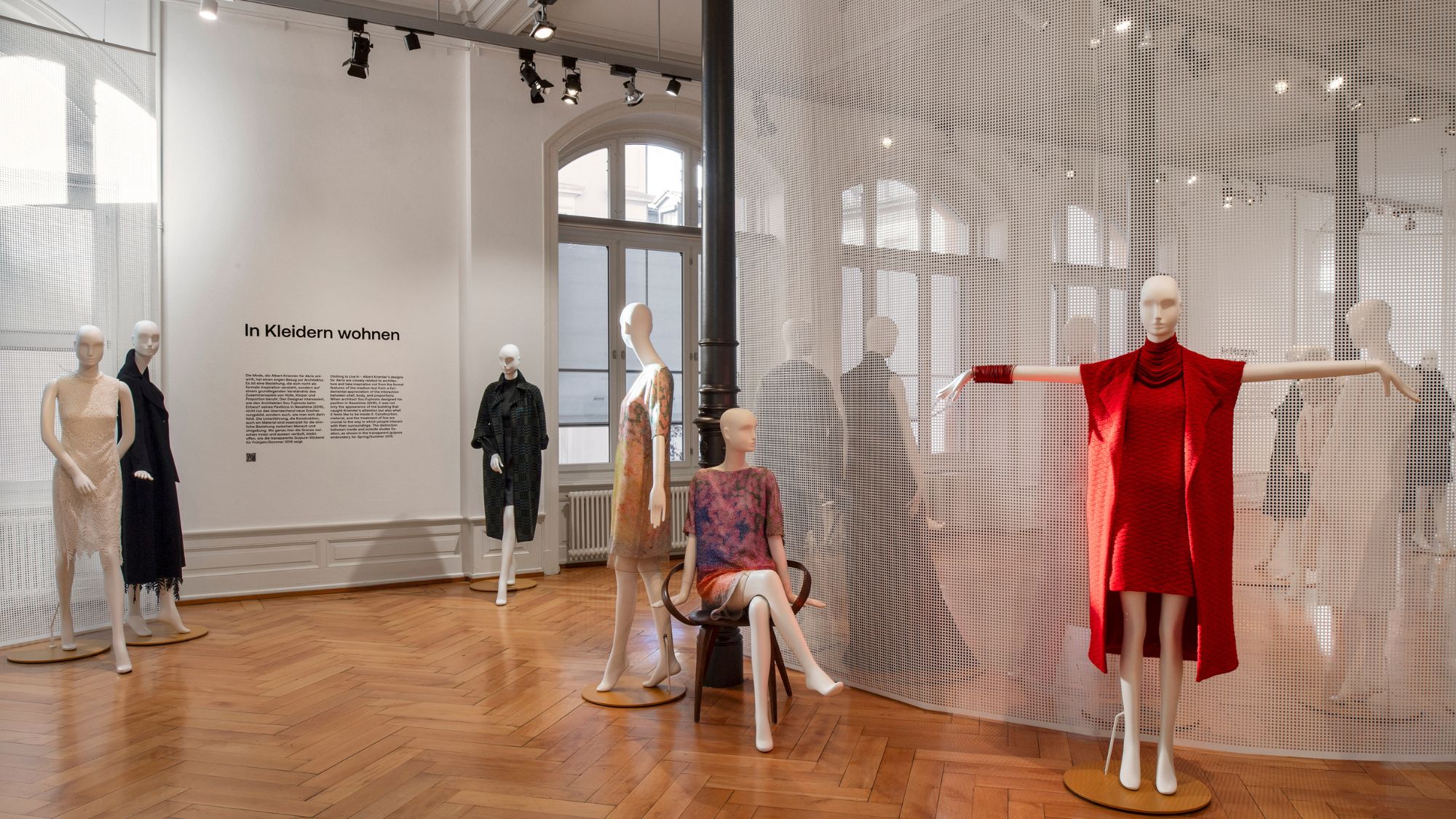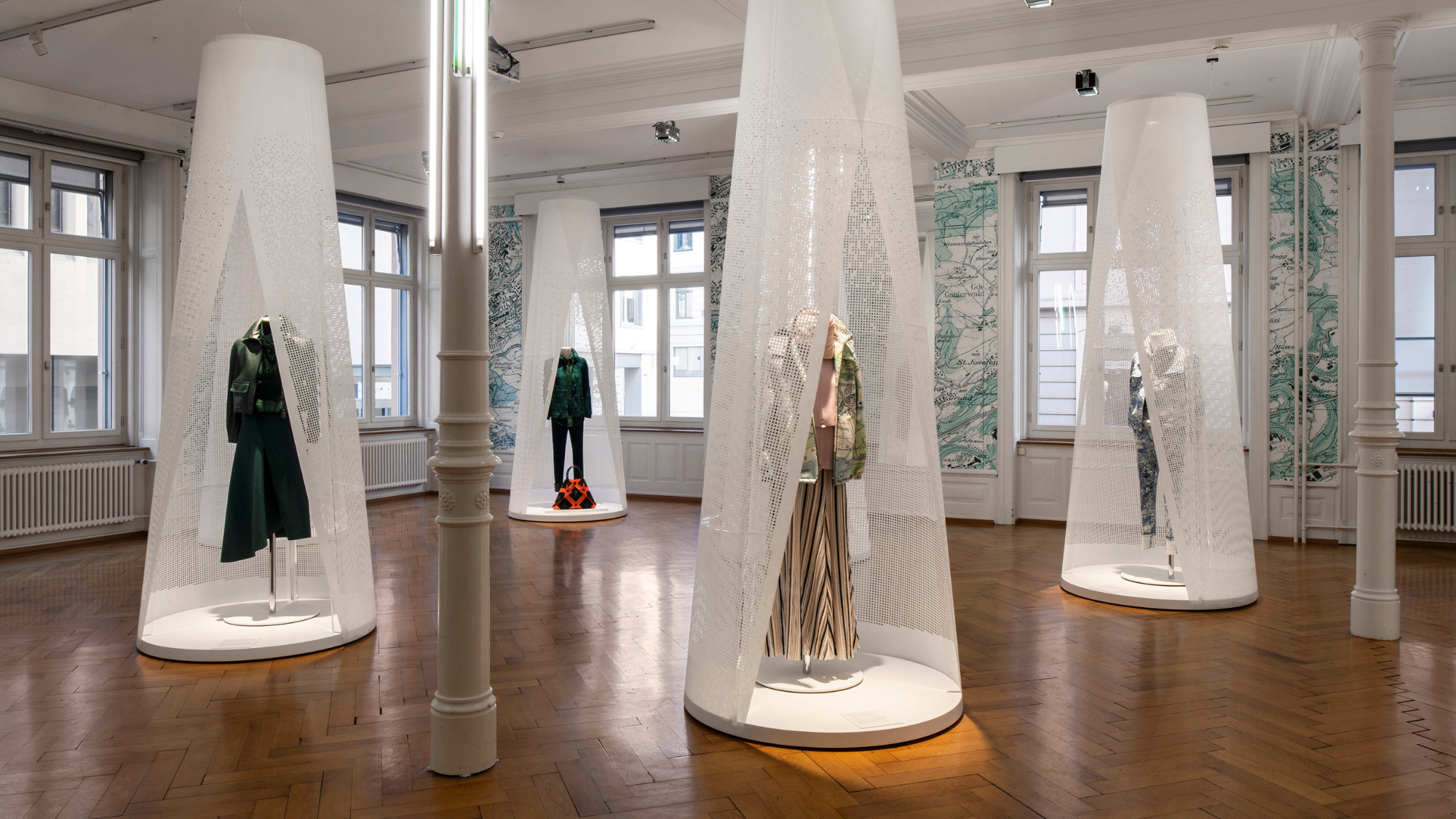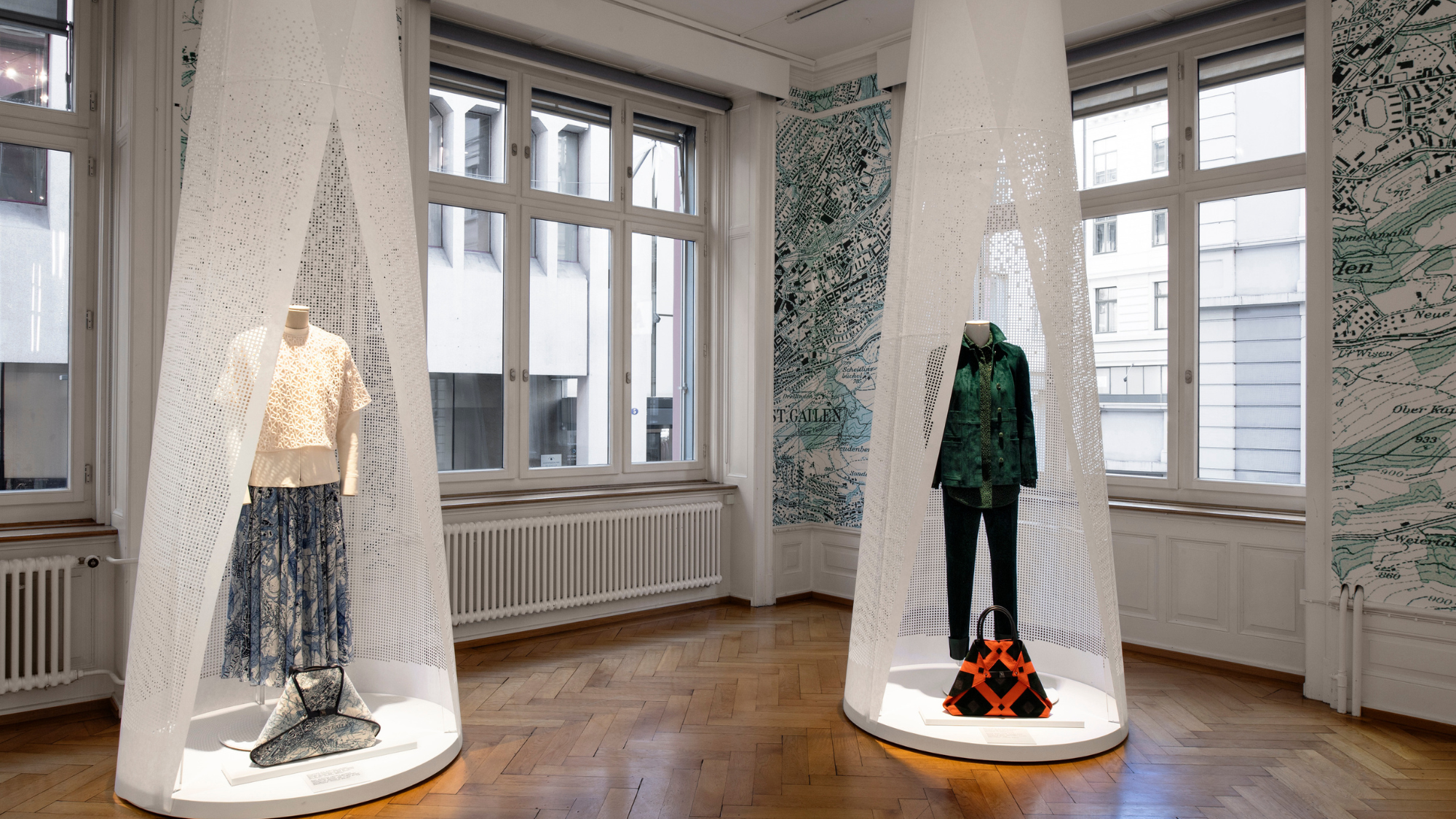Inside Akris' latest exhibition in St. Gallen
Take a trip down the brand's century-old heritage


There are only a handful of fashion brands that can credit 100 years of pure family and cultural tradition as the backbone of their success. Akris is most certainly one of them.
The brand was founded in 1922 by Alice Kriemler-Schoch in the small Swiss city of St. Gallen. Since then, it has been moving from strength to strength throughout the past century. Having began as an apron atelier for women, Akris has evolved past its polka-dot apron days to an eponymous Swiss brand adored by empowered women all over the world- with Kriemler-Schoch's grandson at the forefront: Creative Director, Albert Kriemler. It's now worn by powerhouse clients ranging from Angelina Jolie to Amal Clooney, who are often spotted in Akris' strong cuts and textiles, as are many other erudite women.
Akris' enduring appeal is most recently being celebrated through its recent exhibition, Akris: St.Gallen, selbstverständlich, open now until March 10th and can be found in St. Gallen's Textile Museum.
In a nod to the name, which roughly means 'natural' in German, the exhibition showcases its most recent collections in their most natural form, alongside a key finish that is notorious for St. Gallen: embroidery.

The truth is St. Gallen has been at the forefront of embroidery since the 13th century. According to Museum of Textile St. Gallen, the city can be credited for the first embroidery machines which were developed in the 19th century. By 1910, St. Gallen's embroidery production was the largest export brand of the Swiss economy.
Eventually, WW1 and the Great Depression would negatively impact the city's embroidery with a slow progression that has now re-established St. Gallen as one of the world's most important embroidery and textile manufacturing cities.
One of the most prominent manufacturers is Forster Rohner. The company produces high-end novelty fabrics for Akris and other high profile fashion luxury houses. It has an impressive repertoire of archival textiles and extensive in-house training to ensure the utmost quality and design work for their clients.
Celebrity news, beauty, fashion advice, and fascinating features, delivered straight to your inbox!
Working alongside Forster Rohner is another reference to Kriemler's passion for making sure his collections hold St. Gallen's embroidery and textiles as a prominent component. Speaking exclusively to Marie Claire UK, Kriemler comments, "Using St. Gallen embroidery in our collections allows us to teach others about our historical identity."
"My grandmother started this house here in St. Gallen sewing embroidered aprons. St. Gallen was once the epicentre of the finest embroidery. To this day, design teams from well-known fashion houses travel to Forster Rohner, Jakob Schlaepfer, and Bischoff Textil to draw new ideas from their archives. For us, the journey is not only shorter, but we also share a common culture and history to create textile innovations together."
For this exhibition, Kriemler and his team lent an ample amount of the brand's personal embroidery archive, all of which is displayed on neat rows for guests to experience in person. These embroidery samples range from 1940s simple trims to bold patterns from the 1980s.
"Embroidery has always been a part of our journey. My grandmother founded this house by sewing embroidered aprons. The embroidery archive in the exhibition, which dates back to the 1940s, was established by her," Kriemler says. "It probably traces the best link between past and present. My team and I are always looking for new ways to advance and innovate textiles. What makes guipure embroidery look modern today? The archive now comprises almost a thousand fabrics: a cultural memory that nurtures new creations."
Evolving past the brand's initial aprons, the exhibition showcases various eras for Akris- including different iterations of the apron. From trousers with apron-esque slits to A-line skirts that scream modern power dressing. Additionally, some of the brand's hero pieces are on display for loyal followers to enjoy and newcomers to discover.
As such, visitors are able to experience a series of collections created during lockdown and before that further show the brand's exceptional craftsmanship whilst getting a closer look at how Kriemler finds inspiration from his native St. Gallen. This is evident early on as upon arrival you are greeted by a grand room upholstered by a moving tribute of various St. Gallen maps. Surrounding it are exquisite garments in different forms of embroidery, fabric, and colours. All of which are encapsulated in tent-like structures that are composed the brand's classic logo.

All of which is made even more nostalgic as you are surrounded by guests admiring the garments, with locals even looking at the wallpaper maps on the walls, trying to find their house within it and the adults recalling tales of their days as children playing outside Akris' HQ. A gentle nostalgic reminder of the brand's resonance on the city's culture.
The exhibition comprises of two floors that touch on some of Kriemler's other inspirations such as art and architecture. From emblematic LED lights and digital prints on fabric inspired by German photographer, Thomas Ruff, for Akris' FW 2014 collection to digitally printed silks and paillettes inspired by poet Ian Hamilton Finlay's work for Akris' SS 2009 collection.
Kriemler's lockdown inspiration is also on display with the FW 2021 collection, which throws it back to map prints dating back from 1878 to 2016. These prints are the same ones that case the exhibition's first floor. One of the prints seen in the collection takes it to the 20th century in Gallus Green. A colour and name which are inspired by Irish Monk Gallus, who founded St. Gallen 1400 years ago. The fascinating sight of this collection is just one of the many that are ready to be discovered at the exhibition.

100 years culminating into multiple successful collections, a place in France’s Fédération de la Haute Couture et de la Mode, a successful book encapsulating the past century, and two recent museum exhibitions in Switzerland; it has been a busy couple of years for the brand.
As Akris prepare for their upcoming FW 2024 show and reap the love for their latest exhibition, Kriemler gratefully looks back onto one of the key materials that makes up the brand- embroidery. "Today, embroidery often inspires notions closer to nostalgia and gendered delicacy," he says. "But for us, it is far from being old or just made for romantic haute-couture dresses. Instead, it is one of the most innovative fabrics I can think of. History is a good thing; the future is even better."

Sofia Piza is the Fashion Writer at Marie Claire UK. With extensive experience and a degree in Fashion Journalism, she covers runway trends, shopping picks, celebrity fashion, and industry news.
Throughout her career, Sofia's work has ranged from in-depth interviews with industry experts and high-profile celebrities to creative production for editorial cover shoots and red-carpet coverage. Born in Mexico and raised in five countries, Sofia's multicultural upbringing has fed into her interest in international markets, leading her fashion week coverage across London, Milan, Paris, New York, and Copenhagen.
When she's not sourcing inspiration from social media, you will find Sofia anywhere from a local vintage market to busy central London streets, people watching to make sure she brings you the latest trends, from the best denim pieces to the must-have investment bags- the possibilities are endless.
